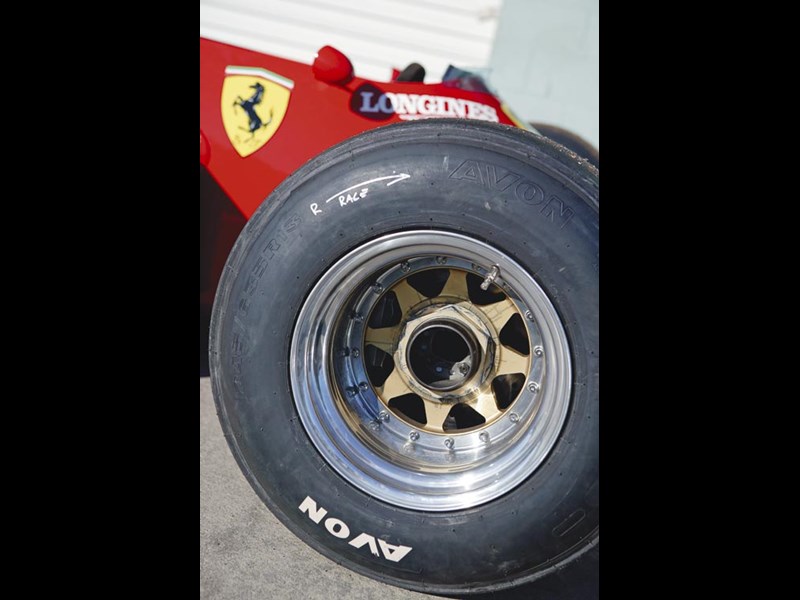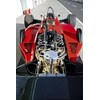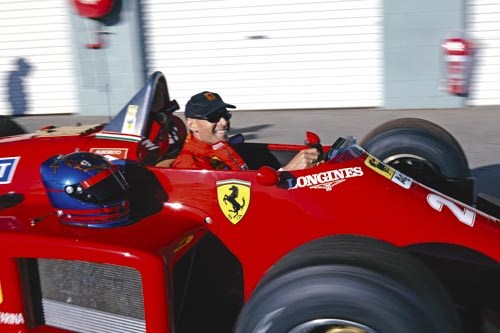1985 Formula One Ferrari
 1985 Formula One Ferrari
1985 Formula One Ferrari

 1985 Formula One Ferrari
1985 Formula One Ferrari

 1985 Formula One Ferrari
1985 Formula One Ferrari

 1985 Formula One Ferrari
1985 Formula One Ferrari

 1985 Formula One Ferrari
1985 Formula One Ferrari

 1985 Formula One Ferrari
1985 Formula One Ferrari

 1985 Formula One Ferrari
1985 Formula One Ferrari

 1985 Formula One Ferrari
1985 Formula One Ferrari

 1985 Formula One Ferrari
1985 Formula One Ferrari

 1985 Formula One Ferrari
1985 Formula One Ferrari


|
|
1985 Formula One Ferrari
|

|
|
1985 Formula One Ferrari
|

|
|
1985 Formula One Ferrari
|

|
|
1985 Formula One Ferrari
|

|
|
1985 Formula One Ferrari
|

|
|
1985 Formula One Ferrari
|

|
|
1985 Formula One Ferrari
|

|
|
1985 Formula One Ferrari
|

|
|
1985 Formula One Ferrari
|

|
|
1985 Formula One Ferrari
|
Sydney’s Guido Belgiorno-Nettis is living the ultimate Ferrari dream

|
|
1985 Formula One Ferrari
|
From Unique Cars magazine, issue #272 (April-May, 2007)
1985 Formula One Ferrari
If you are in your 20s and were at the 2007 Australian F1 Grand Prix in Melbourne, what’s your chance of being behind the wheel of Kimi Raikkonen’s winning Ferrari in the year 2027. Do pigs fly?
Sydney’s Guido Belgiorno-Nettis certainly didn’t give a thought to acquiring a Ferrari F1 team car like the ones he saw Michele Alboreto and Stefan Johansson race at the 1985 Australian GP in Adelaide when he went there with his father.
But here he is today in his 40s, the owner of two of that year’s team cars. And what’s more, he’s living the ultimate Ferrari dream – he’s racing them!
Fast-tracking into an F1 Ferrari was not even on his radar until his family company Transfield stumped up to sponsor the inaugural Transurban Australian F1 Grand Prix at Albert Park in 1996.
Having just been awarded the contract to build Melbourne’s City Link toll road network, Burnley Tunnel and Bolte Bridge with Japanese partner Obayashi, Transfield was on a roll and Guido was receptive when he was told the ex-Michele Alboreto Ferrari from the 1985 season was on the market.
Being a good Italian, he had grown up with 105 series Alfas and had moved into his first Ferrari – a 1970s 365 Boxer – three years earlier. But apart from a couple of car club circuit sprints, he had never participated in organised motorsport, let alone raced an F1 Ferrari. However he now had the money, the car was "reasonably priced" and it was far too good an opportunity to pass up.
Ferrari Tipo 156/85 chassis 079 was one of five Ferrari team cars used in the 1985 F1 season. Mercurial young Italian, the late Michele Alboreto, had made excellent use of it, finishing 2nd in the Brazilian and Portuguese Grands Prix on April 7 and April 21 that year and taking a 4th at the Austrian and a 6th in the San Marino Grands Prix later in the season, with the car competing in nine of that year’s 16 F1 Championship races.
Alboreto was the first Italian to race for Ferrari for many years and was supported through his early career with the Scuderia by a wealthy patron, Count Gugge Zanon, who was so well regarded by Ferrari for his support of Alboreto and the Team that Enzo Ferrari agreed to gift him Alboreto’s car at the end of the 1985 season.
Count Zanon kept 079 in his private collection for the next 10 years, during which time it was always maintained by the Ferrari factory and was driven occasionally by Alboreto. But he found with his advancing years he wasn’t able to enjoy driving the Ferrari as much as he liked and a deal was done.
"Initially I had no plans to race the car," Guido admitted. "I really loved that turbo era of F1 and felt that the Ferrari was the prettiest of all the cars of the time. But I wanted to use it – all my toys get used."
Now driving a turbocharged F1 Ferrari isn’t something you take lightly, like a test drive of a Fiat Punto. The 1980s turbo era was a very special period in F1, with breathtaking power on tap from engines of just 1.5 litres. With this power and their relatively narrow power band, the cars were regarded as very challenging on the limit, particularly when on full boost just before each gear change.
The 1985 Ferraris were at the top of their class and featured twin low-mounted KKK turbos on 120-degree 1496cc V6 engines. With a compression ratio of 7:1, they produced 580kW at 3.6 bar in race trim, but with the boost gauge screwed up to its maximum of 4.6 bar up to 700kW was available for qualifying – an awesome combination when equated to the car’s race weight of less than 600kg.
Sure they had carbonfibre tubs and other new-age technology, but their transverse-mounted five-speed gearbox was operated through a conventional gate via a right-hand gear change, while there was just a ZF self-locking differential to meter out that power in place of the sophisticated electronic traction control that today’s F1 pilots enjoy.
Like other F1 cars of the period, the cockpit of the Ferraris was well forward in the chassis, leaving the drivers of these rocketships very exposed to front-end impacts, but the sleek bodywork by Italian aircraft maker Aermacchi made them things of beauty to behold.
Initially Michele Alboreto and Frenchman Rene Arnoux were team mates at Ferrari, but when Arnoux was sacked in sensational circumstances after the opening GP of the 1985 season in Brazil for alleged substance abuse, his place was taken by Sweden’s Stefan Johansson. By mid-season, Alboreto was looking good for the 1985 title, but a series of turbo, gearbox and gearchange failures cost him dearly and Alain Prost in a McLaren took his first F1 title from the Italian.
So it was into Michele’s shoes that Guido stepped 11 years ago. Initial outings were limited to private testing sessions, demonstrations and the occasional track day, with Guido dialling himself into a world that few have experienced and even fewer have mastered.
"I started off very cautiously," he said. "I get a little better each time I drive it, but I never pretend to myself that I’m really an F1 driver. That’s another league that I’ll never join. To drive it quickly requires a huge amount of skill and I don’t have that – just enough to keep it on the track and enjoy myself."
With a power-to-weight ratio in race trim of around 1kW/kg, the Ferrari has ferocious acceleration with the turbos fully spooled up – far in excess of the BMW M5 V8 that was the fastest car that Guido had ever previously driven. And its braking power through the Ferrari’s carbon rotors even in 2007 is of a dimension experienced only by leading sports car and open wheeler drivers.
However it’s the physicality of driving the car that has Guido in awe. "It might be light in weight, but it’s very heavy and demanding to drive," he said. "There’s no power assistance for anything; I can’t even hold the clutch down for more than 10secs before my leg starts wobbling.
"The G-forces are quite extraordinary. You’re always working to keep your body in position and although I’m fairly fit, when I get out of the car after just five laps I’m drenched in perspiration.
"Those guys who drive these cars for two hours in a Grand Prix are clearly elite athletes of the highest order. To be able to race for 60 laps in this car like Michele and Stefan did is quite incredible."
While the acceleration and braking is mind-shifting, Guido says that’s really the easiest part to adjust to. "You have good power from around 8000-11,000rpm and there’s no turbo lag at that stage and the car is quite tractable," he said.
"Getting it off the line is fairly easy too once you get the knack. I just spool it up to around 9000rpm and then drop the clutch, short-shifting into second to cut down the wheelspin and to get the power to the ground."
That’s in the dry. "I’ve not yet run it in the wet," Guido confessed. "It’s not something I’m keen to do, but I have a full set of (wet weather tyres) now at race meetings in case the weather changes."
When you see the swarm of mechanics around a modern F1 car, you wonder just how feasible it is for a private individual to own and run one. Well, as long as your car was built no later than the early 1990s, when complex electronics and telemetry took over; the answer is that it’s not particularly difficult.
Guido’s car is maintained by Sydney Motorsport specialists Superior Automotive Services and needs only Rodney Gibbs and one other technician at meetings to keep it ticking along provided there are no major dramas. But as a precaution the engine is pulled down and checked every 60-80 laps – the equivalent of a full Grand Prix.
"Owning an F1 Ferrari doesn’t really give you any kudos at Maranello," said Guido, "even if you are Italian. Ferrari is a very aloof organisation and it is really a big bureaucracy to deal with rather than the cosy little racing team you see on TV."
Parts are generally available – the only difficulty has been finding some of them quickly. So Guido came up with the perfect solution: he recently purchased a second 1985 Ferrari Tipo 156/85 team car, a vehicle mainly raced by Alboreto’s team mate Stefan Johansson.
Chassis 082 had been on the market for a year or so before Guido negotiated a deal and what he purchased was a carbon copy of the Alboreto car in every respect. The great Michele even drove the car at the 1999 Goodwood Festival of Speed less than two years before his death.
"It’s not as famous as 079," said Guido. "It only did two or three races in the 1985 season but as it’s identical, it’s a perfect source of parts, even though we are planning to race prepare it and have it at meetings."
Its value at the recent Shannons Phillip Island Classic historic meeting was proved after 079 had driveshaft and gearbox problems at an earlier Eastern Creek outing and the parts from 082 were used to get the car on the Phillip Island grid.
And when he took second place in one of the racing car scratch races at the meeting – his highest finishing place to date in the car – Guido felt particularly proud, not just for himself, but for his late compatriot, Michele Alboreto.
Sadly, they never met or spoke before Alboreto’s tragic death in April 2001, aged 44, while testing an Audi Le Mans sports car. But at the ’Island, around the same age and driving the same scarlet Ferrari, Guido felt very close to the car’s former driver.
He hopes the result is one of many he will achieve in the future. "I plan to keep racing it in Australia for a few years and then maybe take it to Europe and compete in some races there," he said.
Michele’s shoes are starting to fit very comfortably now.
Unique Cars magazine Value Guides
Sell your car for free right here
Get your monthly fix of news, reviews and stories on the greatest cars and minds in the automotive world.
Subscribe

.jpg)














